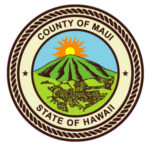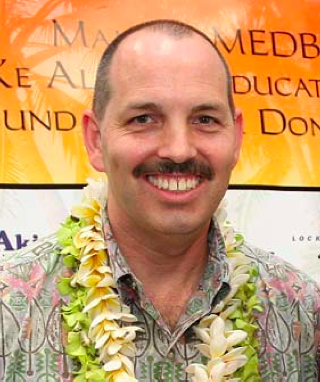
Sep 22, 2011 | Environment, Events, Small Business
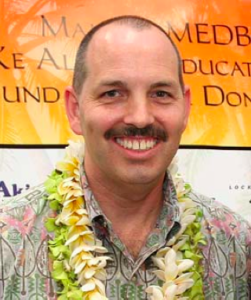 This year’s Advanced Maui Optical and Space Technologies (AMOS) Conference provided an unmatched opportunity for Maui Oceanit Program Manager Curt Leonard. “To remain relevant in any business environment it is important to maintain close ties with “old friends” from industry while at the same time exploring new companies and emerging technologies,” Leonard said. The AMOS Conference is a program of the Maui Economic Development Board, whose mission includes taking innovative actions that strengthen existing industry as well as diversifying through new opportunities. The event held in Wailea earlier this month drew more than 600 participants from across the United States and countries such as Spain, Germany and Italy. The growing interest in the event is testament to its worldwide reputation as the premier space situational awareness conference in the world, taking full advantage of its location on Maui and the island’s cutting-edge telescopes atop 10,000-foot Haleakala.
This year’s Advanced Maui Optical and Space Technologies (AMOS) Conference provided an unmatched opportunity for Maui Oceanit Program Manager Curt Leonard. “To remain relevant in any business environment it is important to maintain close ties with “old friends” from industry while at the same time exploring new companies and emerging technologies,” Leonard said. The AMOS Conference is a program of the Maui Economic Development Board, whose mission includes taking innovative actions that strengthen existing industry as well as diversifying through new opportunities. The event held in Wailea earlier this month drew more than 600 participants from across the United States and countries such as Spain, Germany and Italy. The growing interest in the event is testament to its worldwide reputation as the premier space situational awareness conference in the world, taking full advantage of its location on Maui and the island’s cutting-edge telescopes atop 10,000-foot Haleakala.
Oceanit typically sets up an exhibit booth during the conference to help facilitate introductions to the company’s capabilities and serve as an ice breaker for business development discussions. Leonard said the event also gives Oceanit a chance to give back to the local community. “As a company we are committed to making a difference in our community, a mantra that is woven into Oceanit corporate fabric,” he said. This year Oceanit volunteered staff to guide students making a tour of conference exhibits and attending a session with an astronaut. “This is a huge hit with middle school students and Oceanit is proud to play a small role in a wonderful opportunity to expose and encourage Maui students to consider career paths in science, technology, engineering and math,” Leonard said. He added that part of Oceanit’s vision is to contribute to a thriving technology industry in Hawaii, to diversify its economy, and ensure that students who go into science and technology fields have a place to work in Hawaii. Oceanit’s Maui office has expertise in optical sciences and design, robotic systems, and consulting engineering; it currently has a contract to evaluate Kahului Harbor shoreline protection options to prevent beach erosion.

Jul 13, 2011 | Environment, Sustainability
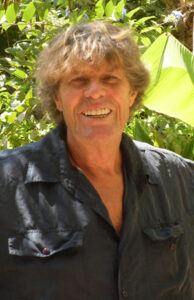 Tucked away in the hot, arid hills above Kihei is a model organic oasis which Nick Oosterveen and his wife Diane have been cultivating since 1987 called Kaimanu Botanical Garden. With generations of agriculture knowledge passed down through his family and a passionate interest in permaculture, Oosterveen has perfected a self-contained ecosystem that epitomizes a “zero-waste” philosophy. Not only does his sustainable farm boast a fertile collection of many exotic vegetables, herbs, fruit, and flowering plants and trees—creating what Oosterveen calls a “food forest”—but it also contains an aquaponics system, in which he raises tilapia and plants together in one integrated, soilless system that utilizes a fraction of the water it usually takes to grow the same crops. And being vegetarians, the Oosterveens eat as much as possible from their own land. “The only food I buy from the grocery store is dairy products,” he declared.
Tucked away in the hot, arid hills above Kihei is a model organic oasis which Nick Oosterveen and his wife Diane have been cultivating since 1987 called Kaimanu Botanical Garden. With generations of agriculture knowledge passed down through his family and a passionate interest in permaculture, Oosterveen has perfected a self-contained ecosystem that epitomizes a “zero-waste” philosophy. Not only does his sustainable farm boast a fertile collection of many exotic vegetables, herbs, fruit, and flowering plants and trees—creating what Oosterveen calls a “food forest”—but it also contains an aquaponics system, in which he raises tilapia and plants together in one integrated, soilless system that utilizes a fraction of the water it usually takes to grow the same crops. And being vegetarians, the Oosterveens eat as much as possible from their own land. “The only food I buy from the grocery store is dairy products,” he declared.
Nick Oosterveen is originally from Holland, but moved to Hawaii nearly 30 years ago after a long career in the music industry in Los Angeles. Since then, he has been whole-heartedly committed to the education, promotion, and development of sustainable living through the sharing of information and creating self-sufficient ecosystems. Oosterveen volunteers to teach Maui students and residents about growing their own food which will help decrease the island’s dependence on imports. “Sustainable food production is going to be one of the key issues this island will face in the future, and with this approach, you can raise a lot of food even in very little space,” adds Oosterveen.
Oosterveen welcomes visitors to learn through hands-on workshops every second Saturday of the month. Topics include: Sustainable Living, Permaculture, Food Forests, Aquaponics, Healing Foods, and more. He offers student tours and classes to any Maui School wanting to participate. For reservations or to schedule private educational tours, send an email to nikodesigns@hawaii.rr.com, or call (808) 250-5113.
Jun 22, 2011 | Environment, Sustainability

Derrick Sonoda of Hawaii Energy
Qualifying nonprofits and small businesses can help save the environment, and save money too, by acting fast to accept a free offer by enrolling in a new energy initiative. The first shipment of energy-saving LED lamps gets distributed this week to participants in the Lighting the Future program. The program, coordinated by Hawaii Energy, aims to raise awareness for the need to reduce dependence on imported oil, keeping money in our economy and conserving our resources. Lighting is the second-largest energy expense for most Hawaii small businesses—the largest is air conditioning, according to Hawaii Energy Director of Operations Derrick Sonoda.
For lighting, Hawaii Energy and its partner, Toshiba, are offering LED lamps at no cost to qualified small businesses and nonprofit organizations. Participants agree to install the new lighting technology prior to June 30. More than 200 entities across the state have taken up the offer. “It’s tremendous,” Sonoda says of the response so far. Qualified businesses and nonprofits should go to www.hawaiienergy.com for more information.
Each LED lamp provides an estimated 30,000 hours of light compared to 2,000 hours for a conventional incandescent light bulb. A LED lamp lasts between six and seven years before it needs to be replaced. Qualified businesses and nonprofits can ask for as many LED lamps as they need to install. “If you can screw in a light bulb, you can get energy savings,” Sonoda said. He said energy costs affect prices of all kinds of goods, including one of Hawaii’s favorite indulgences. “Everything is so dependent in the state on oil, even the price of Spam musubi is affected.”
Also supporting this energy-saving initiative are Hawaii Energy’s distribution partners, who have agreed to provide assistance in getting the LED lamps to the participating businesses and nonprofits. The Maui Economic Development Board is one of many that have agreed to serve as a distribution center for the LED lamps. Sonoda said community support is crucial to Lighting the Future’s success. “If we don’t tackle this as a community, it will kill us… we really need to be less tied to oil.”
May 10, 2011 | Environment
 A recent article (April 26) in the Pacific Business News (PBN) described progress in efforts to develop a 200 MW wind farm on Molokai.
A recent article (April 26) in the Pacific Business News (PBN) described progress in efforts to develop a 200 MW wind farm on Molokai.
Take this poll and tell us what you think.
[poll id=”2″]
May 5, 2011 | Environment
 Gunars Valkirs, a renowned biophysicist, volunteers his time and considerable expertise to the Whale Trust, a Maui-based nonprofit organization that conducts permitted research on the complex behavior, communication, and social groupings of humpback whales. Currently, one strand of the Trust’s research focuses on the relationship between whale behavior and steroid hormone levels tested in blubber samples. Among his other contributions, Valkirs is mentoring and supervising students analyzing the hormone samples at Lahainaluna High School in teacher Steven Cornell’s biotechnology lab.
Gunars Valkirs, a renowned biophysicist, volunteers his time and considerable expertise to the Whale Trust, a Maui-based nonprofit organization that conducts permitted research on the complex behavior, communication, and social groupings of humpback whales. Currently, one strand of the Trust’s research focuses on the relationship between whale behavior and steroid hormone levels tested in blubber samples. Among his other contributions, Valkirs is mentoring and supervising students analyzing the hormone samples at Lahainaluna High School in teacher Steven Cornell’s biotechnology lab.
Valkirs has spent his distinguished professional career in medical diagnostics after graduating with a doctorate from UC San Diego. He invented and developed the first rapid, visual pregnancy test before founding his own diagnostic research company, Biosite Inc. After selling the company in 2007, Valkirs and his wife, JoRene, retired to Maui and established the Makana Aloha Foundation, a private family foundation committed to supporting and improving the Maui community. “We share the community values expressed through Focus Maui Nui. Before we moved here, we had not fully appreciated the strong sense of community and ‘ohana,” notes Valkirs.
Commenting on public education in Maui Nui, Valkirs says, “I am a product of public education and I am committed to supporting excellence.” Valkirs explains that his foundation supports public education through the agriculture program and science lab at Lahainaluna High School; environmental conservation, especially the work of the Whale Trust; human needs through healthcare projects; and the arts. Valkirs’ vision for future work includes a marine biology facility within the public school system, and establishing active collaboration in whale research between students from Maui and Alaska.
Meanwhile, the work of the Whale Trust continues by promoting scientific research on whales and the marine environment, and by developing public education programs based directly on research results. For more on the Whale Trust, go to: http://whaletrust.org/.
Apr 21, 2011 | Environment
 Continuing our series on newly appointed County Department Directors, reflecting the role of government in responding to community values and needs.
Continuing our series on newly appointed County Department Directors, reflecting the role of government in responding to community values and needs.
The priorities for Kyle Ginoza, Director of the County Department of Environmental Management, are directly aligned with two of the community values identified through the Focus Maui Nui process: Protecting the environment, through solid waste management and wastewater reclamation, and addressing related infrastructure challenges to improve capacity and ensure reliability of service. At the same time, Ginoza is responsible for ensuring the County is in compliance with EPA and other Federal and State regulatory mandates. His immediate challenges are launching a pilot curbside recycling program in South Maui, and expanding the recycled water capacity of the Lahaina wastewater treatment plant.
Ginoza was born and raised on Maui and graduated from Maui High School. He earned degrees in mechanical engineering from Stanford University and a Masters in Business Administration (MBA)from UCLA before beginning his career as a Project Manager for Honeywell in the field of commercial jet air conditioning. He returned with his wife, Kim, who is also from Maui, to raise their young family. He was Director of Transportation during Mayor Arakawa’s first term (2003-06), overseeing the early days of the Maui Bus system. More recently, he worked as a project manager for Munekiyo and Hiraga Inc., and for the County as a project engineer in their wastewater division.
“My family is my priority outside of my work for the County,” says Ginoza. “I’m proud to be my daughters’ soccer “Team Dad” and go to their swimming practices. I’m also involved in education as a volunteer Board Member for the Wailuku Hongwanji Mission Japanese School.” Ginoza’s family-oriented values are enhanced by an unexpected talent – as a recreational magician. “I’m the free entertainment at birthday parties for my daughters and their friends. I have a bevy of tricks. I really enjoy that,” Ginoza adds with a warm smile.

Mar 24, 2011 | Environment
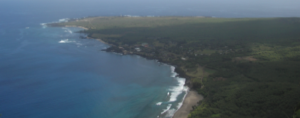
Ten things you can do to protect the Environment:
- Buy local
- Car pool to work
- Grow native plants in your yard
- Use biodegradable products whenever possible
- Install rooftop photovoltaic panels for hot water
- Maintain your car, especially if it’s an older model
- Support your local watershed partnership
- Adopt your favorite park and help keep it tidy
- Teach your children to protect the environment
- Turn off lights in unoccupied rooms
What else can we do to protect the environment? Leave us a comment and share your ideas!
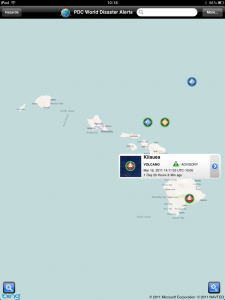
Mar 17, 2011 | Environment

PDC World Disaster Alerts app on iPad
Disaster Alert, the free app developed by the Kihei-based Pacific Disaster Center (PDC) for iOS devices (iPhone, iPod touch and iPad) and Google’s Android platform, was featured in an article published today in the online version of USA Today.
A shorter version is expected to appear in the weekend print edition of USA Today. PDC has been advised that the article may be featured on CNN this Sunday, March 10th, at 2.30 p.m. EST.
The article describes the spike in disaster app downloads following the earthquake and tsunami in Japan on March 11th. Downloads of PDC’s Disaster Alert tripled from the average of 3,500 downloads per week, and has now reached close to 100,000 downloads, ranked #30 and #41 top free (News) for iPad and iPhone, respectively.
Disaster Alert provides instant access to global “active hazards”, including weather-related disasters, earthquakes, volcanic eruptions, and tsunamis. The USA Today article quotes PDC Executive Director Ray Shirkhodai: “We harvest and present a lot of data from more than 65 trusted sources and mark those that are potentially dangerous.” The app monitors multiple agencies in real time, and information can be disseminated well ahead of mainstream media broadcasts.
The Disaster Alert app launch was featured in a Focus Maui Nui article published by the Maui News on August 16, 2010.
Mar 16, 2011 | Community, Environment
 All volunteers who make a difference in the community by improving the environment deserve recognition, but volunteering every day for ten years and transforming an unkempt coastline into a thriving native ecosystem represents an extraordinary achievement.
All volunteers who make a difference in the community by improving the environment deserve recognition, but volunteering every day for ten years and transforming an unkempt coastline into a thriving native ecosystem represents an extraordinary achievement.
Mike Perry, retired Lahaina Postmaster, has been instrumental in transforming 20 acres of Kanaha Beach Park, makai of the airport in Kahului, into a well-cared for habitat that supports diverse native plants and wildlife. Over the years, and with occasional help, Perry has cleared trash, pruned the understory of trees, trimmed back the kiawe, tended the Park’s wetlands, removed invasive weeds – an ongoing, endless chore – and nurtured heritage species that are now protecting the natural dunes.
“The County takes care of the campground in the park and mows the grassy areas, and Maui Community Work Day removes the green waste, but there’s a lot to do. I always welcome help, and there’s a lot that volunteers can learn about a unique environment of native plants growing naturally in a beachfront setting,” says Perry. (Volunteers can reach Perry through Maui Community Work Day). “Because this work does not depend on outside funding or grants, it’s sustainable all the while the voluntary effort continues,” he adds. Many locations around the State benefit from one-time improvement grants and volunteer labor, but Kanaha is special because of Perry’s ever-presence.
Before transforming Kanaha one section at a time, Perry taught himself about native plants. He apprenticed as a volunteer with Maui Community Work Day, the Nature Conservancy, and the Sierra Club, and on environmental projects on Molokai and the Big Island. “Over the years, Kanaha became a pleasant, family-friendly beach park,” observes Sharon Balidoy, coach of Lae`ula O Kai canoe club, which has been based at the park for 20 years. “Mike Perry is a treasure. He is a one-man force who tirelessly works hard and has made a significant difference in our community.”

 This year’s Advanced Maui Optical and Space Technologies (AMOS) Conference provided an unmatched opportunity for Maui Oceanit Program Manager Curt Leonard. “To remain relevant in any business environment it is important to maintain close ties with “old friends” from industry while at the same time exploring new companies and emerging technologies,” Leonard said. The AMOS Conference is a program of the Maui Economic Development Board, whose mission includes taking innovative actions that strengthen existing industry as well as diversifying through new opportunities. The event held in Wailea earlier this month drew more than 600 participants from across the United States and countries such as Spain, Germany and Italy. The growing interest in the event is testament to its worldwide reputation as the premier space situational awareness conference in the world, taking full advantage of its location on Maui and the island’s cutting-edge telescopes atop 10,000-foot Haleakala.
This year’s Advanced Maui Optical and Space Technologies (AMOS) Conference provided an unmatched opportunity for Maui Oceanit Program Manager Curt Leonard. “To remain relevant in any business environment it is important to maintain close ties with “old friends” from industry while at the same time exploring new companies and emerging technologies,” Leonard said. The AMOS Conference is a program of the Maui Economic Development Board, whose mission includes taking innovative actions that strengthen existing industry as well as diversifying through new opportunities. The event held in Wailea earlier this month drew more than 600 participants from across the United States and countries such as Spain, Germany and Italy. The growing interest in the event is testament to its worldwide reputation as the premier space situational awareness conference in the world, taking full advantage of its location on Maui and the island’s cutting-edge telescopes atop 10,000-foot Haleakala.









